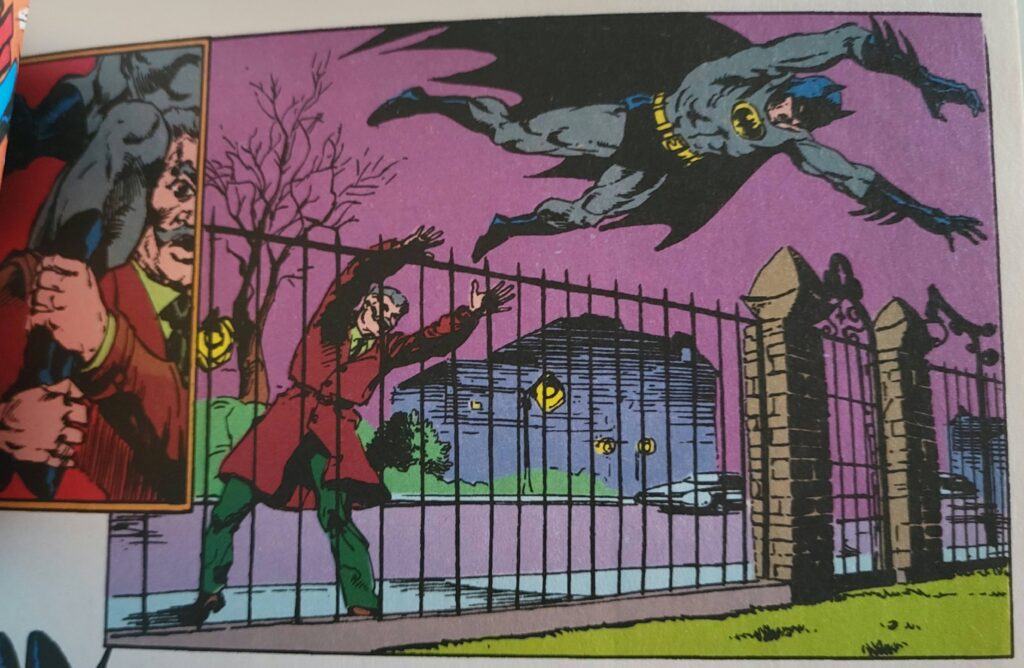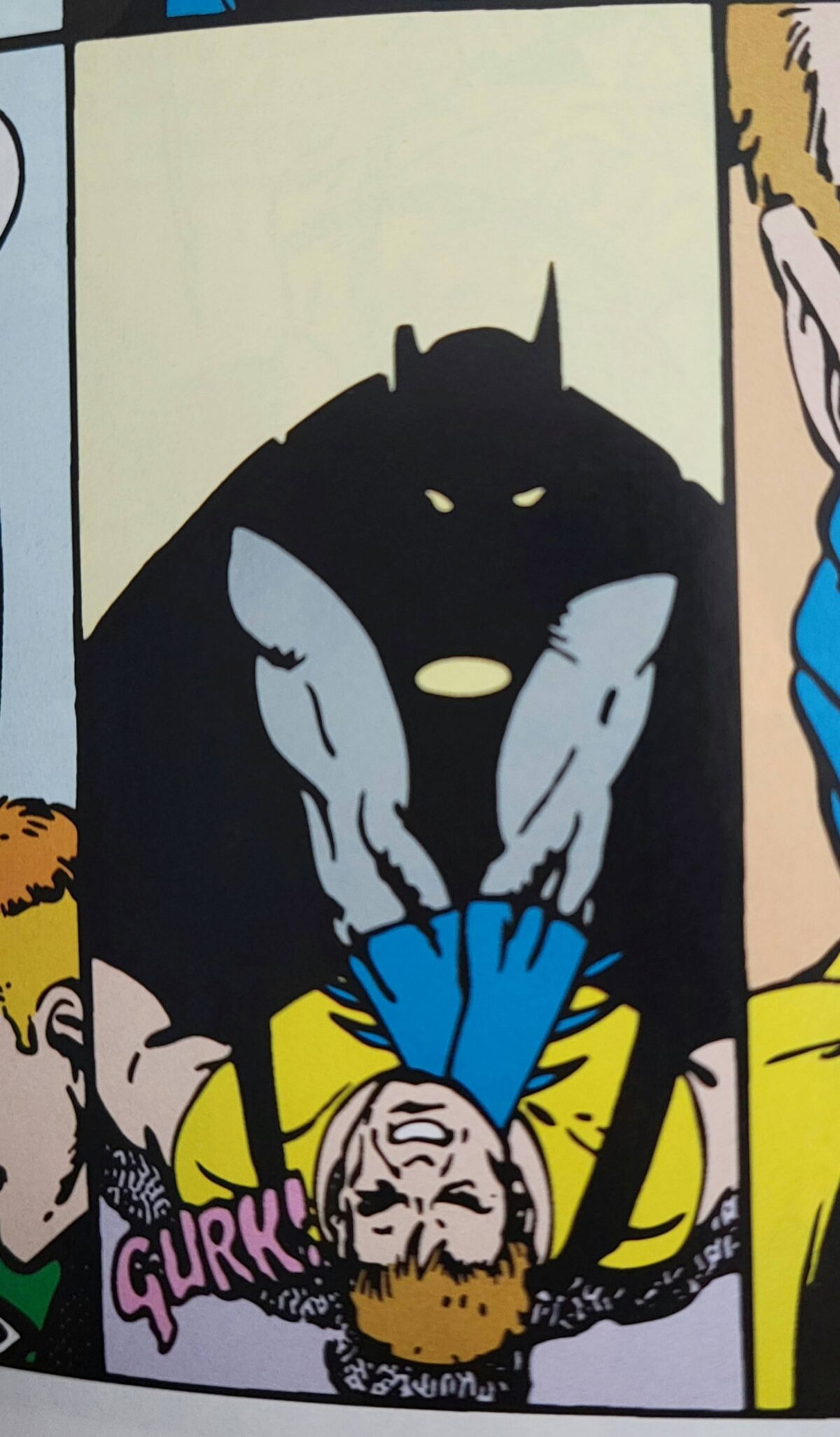I used to really love comic books. I used to really love superhero comics in particular. But somewhere in the avalanche of movies and tie-ins and reboots I got buried and I never dug myself out. Perhaps the massive increase in volume did not correspond to an equally massive increase in quality.
Or perhaps I just reflexively start hating things when other people like them.
Either way, now I only go to the comic book store by a sort of rote impulse – I look at the books on the shelves, I make eye contact with the familiar cowled faces, I buy nothing, and I go home.
I’m trying to avert this nullification by diving back into my comics collection and reconnecting with the material that made me crazy in the first place. And we’re starting at maybe the worst possible place for this journey to make any sense: the John Ostrander/Kim Yale/et al era of the Suicide Squad.
The Squad has gotten a bad rap in the last few years because of the godawful David Ayer movie, and then the, like, very okay James Gunn movie, and then the video game (I can’t remember if it was supposed to be good or bad, and I don’t care). But back in 1988, the Suicide Squad was just becoming itself, and the awkward wild nasty process of its birth is one of the most fascinating serial narratives in comics history.
The Suicide Squad is the brainchild of Amanda Waller – if you’re reading this, you probably know that. The Wall’s been getting a bad rap of late, with depictions of her in other media tending toward the utterly villainous. But Waller is more complicated than this, and in the hands of John Ostrander and Kim Yale she becomes one of the most challenging and interesting characters in the DC Universe. She’s not a good person, definitely not a hero, and she knows it, but she believes wholeheartedly that she is a necessary evil, that all the ways she’s mortgaged her soul were required to safeguard her children and her country. And she might be right: Ostrander and Yale write with surprising sensitivity (BY 1980s STANDARDS, NOT 2020s STANDARDS) about the struggles she faces as a Black woman in the non-stop white boy winter that is the American government. The dislike other characters hold for her is probed and considered, revealing ugly and unflattering and deeply real aspects to characters who might otherwise get away looking squeaky clean. I appreciate that.
There’s so much shading to each member of the Squad, and many of their adversaries too. Bronze Tiger, Deadshot, Nightshade, Count Vertigo, even Captain Boomerang – the stupidness of their gimmicks and bits elevates the poignancy of their mistakes and failings. The characters of the Suicide Squad, being disposable on an ontological level, are allowed to fail big, much bigger than more mainstream heroes. And they’re allowed to change significantly, sometimes for the worse. They are a mess of competing goals, desires, and schemes, and frequently that mess escalates into a total trainwreck. They do not slide into the currently popular (and perfectly fine when it’s used well) trope of Found Family. The members of the Squad hate each other and their masters at the beginning, and they still hate each other at the very end. Their relationships are all diseased by the power they wield over each other. In that way, this book is very honest about how ugly human relationships can get.
The thematics of power scale up in fascinating ways throughout the story, escalating into a type of late Cold War foreign policy kitsch which I find endlessly fascinating. The decision to depict the actual Reagan and actual HW Bush deploying the Squad to battle Commie superheroes will never not amuse me. The Suicide Squad trots the globe like a CIA-trained circus, wrecking up the place and usually making things worse for everyone around them. Much like the real CIA. This relationship between the Squad and the US government is a beautiful/ugly inversion of the relationship constructed every time Superman mentions that he’s fighting for Truth, Justice, and the American Way. Superman uses his god-like strength to maintain the ever-crumbling pedestal of American exceptionalism, papering over American evils with his own incontrovertible goodness. Conversely, anyone who associates with the Suicide Squad is dragged down to their level, made venal and violent by association. And since it’s the US government which invents the Squad, one must wonder who was the really venal and violent one in the first place.
I have to be clear that this book is full of plenty of material which now reads as cringe. Ideas that were progressive or groundbreaking in 1988, 1990, 1992 feel wildly embarrassing in 2025. The decision to color the skin of everyone from South Asia and the Middle East grey is consistently baffling to me. I know you guys had brown ink. All the Black characters have human-colored brown skin. Surely it couldn’t have been that hard to make a slightly lighter brown??? There is a lot of discomfort to be had here.
I still love the book, though, because of the thrill of its best and biggest moments, as well as the fervor of its convictions. Even cynicism was brighter and more alive in prior days.
Very, very, very few pop culture works, especially goofy old comic books, have the strength to confront and condemn their core concepts. The 2004 Battlestar Galactica is one of the few TV shows to risk this, and to my mind the penultimate mutiny storyline is one of the show’s all-time best. Similarly, the final arc of the Ostrander-Yale Suicide Squad is a complete deconstruction of its central premise, a final judgment delivered on the idea of government-enslaved supervillains press-ganged into performing “righteous” violence (and when you put it like that…). I have no qualms about spoilers for a work that concluded before I was born, but if you have that kind of fixation, keep scrolling until you see Batman again.
The last operation is a battle between the original Squad and a new, even worse Suicide Squad developed by another, especially shadowy arm of the US government. In the wake of the conflict, Waller dissolves the Squad and frees its members, admitting that her scheme did more harm than good. Deadshot and Count Vertigo confront each other atop a hill: Vertigo earlier asked for the option to be killed by Deadshot, rather than continue to live with bipolar disorder. Deadshot asks Vertigo one more time whether he wants to live or die. Vertigo hesitates, hesitates, hesitates, and then refuses Deadshot’s offer. They both depart.
This is an obvious literal denial of the book’s title. No more suicide, no more death. Count Vertigo, for all his SIGNIFICANT flaws, gets to live, and wants to. Deadshot, for all his depraved obsession with slaughter, does not kill again, and he makes that choice of his own volition. Both men are better than we have been led to believe.

Supervillains are supposed to represent an outsize evil and perversity, the exact mirror to the outsize good of superheroes. But in the Ostrander-Yale Suicide Squad, whatever heights of villainy our Squaddies achieve, none of them match the craven brutality of The State – America, Russia, Israel, all of them that appear in the book.
That idea, more than any other from this book, feels sharper than ever. And yet imagine hearing that from a comic book or a superhero movie today.

